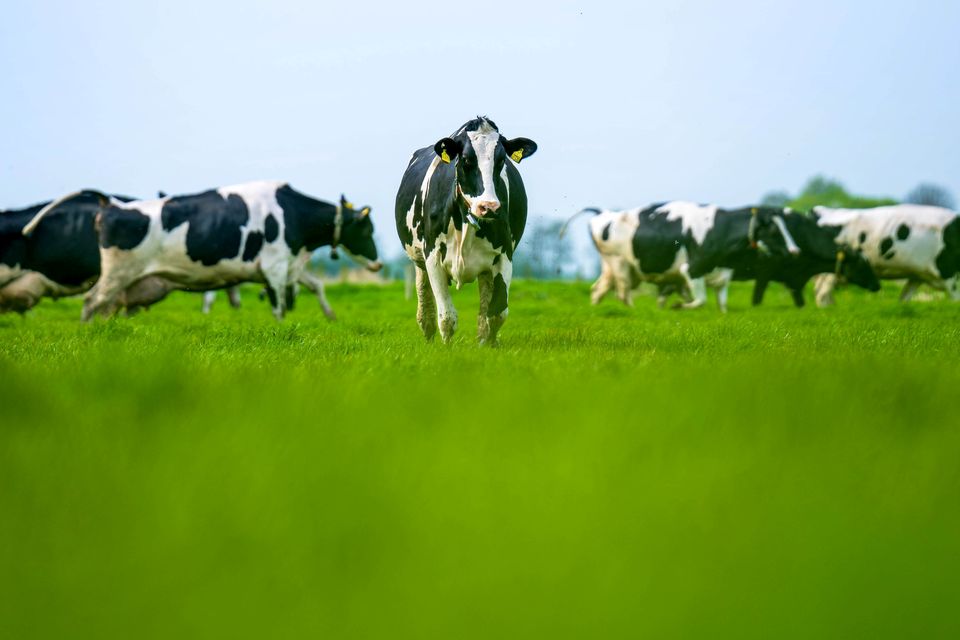EU dairy processors warned of landslide in milk volumes by up to 20pc
Rabobank dairy analyst says it’s better for dairy companies to be proactive than face harsher consequences later
In Rabobank’s base scenario, northwestern European milk production will gradually decrease by 7.4 million metric tons (13pc) to 50 million metric tons from 2023 to 2035 – erasing nearly all the production growth since 2010. Photo: Getty Images
Dairy processors have been warned of an impending landslide in milk production in northwestern Europe, with processors looking towards the east for new opportunities.
The northwestern region shows signs of a structural decline in milk production based on an extended period of weakened profitability, environmental limitations, labour constraints, and more extreme weather conditions, according to a new Rabobank research paper by dairy analyst Richard Scheper.
Denmark, Germany, the Netherlands, and Belgium have been at the centre of EU milk supply growth, driven by the elimination of milk quotas in 2015, the expansion of trade agreements, periods of healthy margins, and declining interest rates that underpinned a wave of on-farm investments.
Cooperatives and proprietary companies added processing capacity to prepare for unfettered milk production growth.
Looking ahead, Rabobank warns that the decline in milk production growth could be stronger than previously anticipated as deadlines for water-quality regulations approach and ammonia reduction targets intensify.
This will result in greater pressure for a reduction of the dairy herd and for extensification of the dairy production system, such as reducing the density of the herd and the inputs used relative to land area.
In Rabobank’s base scenario, northwestern European milk production will gradually decrease by 7.4 million metric tons (13pc) to 50 million metric tons from 2023 to 2035 — erasing nearly all the production growth since 2010.
Rabobank’s downside scenario highlights the implications of an accelerated drop in milk volumes if expedited targets collide with weak margins.
This would reduce the region’s milk production by 11.5 million metric tons, or 20pc, from 2023 to 2035, with the steepest drop of 8 million metric tons (3.1pc annually) occurring from 2025 to 2030.
Both scenarios will force dairy companies to gear their strategies toward higher value-added protein ingredients, branded consumer products, and cheese to compensate for additional farmgate and manufacturing costs and the loss of export competitiveness
Both scenarios will force dairy companies to gear their strategies toward higher value-added protein ingredients, branded consumer products, and cheese to compensate for additional farmgate and manufacturing costs and the loss of export competitiveness.
Also, processing capacity will exceed the available milk supply, resulting in less condensed milk and whole milk powder production.
For dairy cooperatives, the capital challenge will be even more complex, as lower milk intake generally coincides with members withdrawing capital.
To overcome high and inefficient transport costs, it’s likely there will be a sharp increase in dairy and proprietary companies investing in local milk collection and capacity to process or concentrate milk over a larger region, such as eastern Europe (Poland), Ireland, the Baltic states, and Spain.
Mr Scheper said that reducing the likelihood or impact of a landslide in milk volumes is not just about “farmer-friendlier” policies and financial support.
“It’s about setting the conditions to create an environment that allows for a smooth transition toward more sustainable farm practices with reduced emissions and increased certainty about future policies,” he said.
“More consistent policies are a requirement. Standstills and stalled policy decisions only make pathways steeper as deadlines come closer. As such, it’s better for dairy companies to be proactive than face harsher consequences at a later stage.”
Speaking with the Farming Independent, Mr Scheper feels the impact of a potential loss of the Nitrates Derogation will be less in Ireland than it is in the Netherlands.
“Dairy farming is certainly quite profitable, so if it comes to a fore you can still compete against beef and sheep... you still have a large beef or suckler cow herd, if there is a reduction then most of that impact will be in beef and not dairy,” he said.
“For example, if Ireland loses its Nitrates Derogation in combination with sub sector limits, both combined would have a big impact. Relatively, compared to the Netherlands, you still have more flexibility to offset the impact.”
Mr Scheper believes that Ireland’s Derogation will not be completely removed from 2026. “Perhaps some further restrictions on the 220 kg N/ha limit you have now,” he suggests.















